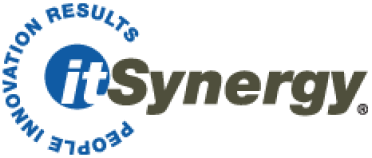itSynergy: Blog

How to Ensure a Stress-Free Microsoft End-of-Life Migration
Continuing to use Microsoft Windows 7 or Windows Server 2008 after January 14, 2020, is akin to creating a huge billboard for hackers that says, “Here I am, open, come and get me!” On that date, both operating systems enter end-of-life (EOL). When Microsoft classifies a product EOL, it means the company will no longer support it through security patches and updates.
You can’t ignore Microsoft end-of-life
Those patches and updates do more than protect you from hackers, they’re a crucial part of meeting regulatory requirements. To pass an OCIE audit or stay compliant with regulations like PCI-DSS, HIPAA or GDPR, your organization needs to prove it meets regulatory security requirements. Because known vulnerabilities are no longer resolved through patches after EOL, you’ll fail an audit and could face significant fines and penalties.
Ignoring end-of-life creates serious risks for your business, and time to prepare is quickly running out. To avoid downtime and major headaches, you need to start planning immediately.
Here’s everything you need to know to get started.
Time is Running Out – You Can’t Afford to Procrastinate
The actual date for Windows end-of-life isn’t until 2020, but all budgeting and preparations need to take place in 2019.
First, you’ll need to select a new operating system. For Windows 7, this usually means moving to Windows 10. If you’re running Windows Server 2008, you need to decide if you want to continue using on-premise servers or migrate to the cloud.
Then there will be a planning phase that typically lasts about 60-90 days. This is when the scope of the project is defined and a road map is created. The migration itself can be managed in phases based on department or all at once. Whichever your company chooses, it needs to fit in with your business cycle.
The longer you procrastinate, the harder it will be to schedule a migration. Not only does the move need to fit in with your schedule, your IT partner must have the time to plan and execute the migration too.
Survey Your Operating Environment
Hardware and software your business relies on might not be compatible with your new operating system. You want to know this before a migration starts, not after.
Older computers may struggle to operate Windows 10, increasing downtime and decreasing efficiency. Or, you may need to update software to continue using line-of-business applications, like QuickBooks.
An IT provider will be able to run a report that quickly assesses each application you use and whether it needs to be updated to run on Windows 10.
Not upgrading won’t offer a solution either. Eventually, software and tools you use now will not be compatible because developers won’t spend time creating or updating apps for unsupported operating systems.
Make Strategic Investments
Budgetary decisions, like whether to upgrade hardware, often involve making difficult choices. For each of our clients, we lead them through questions about business drivers and which options will mitigate risks. The goal is not to push new devices on businesses but help owners figure out the best choice available.
For instance, it makes little sense to purchase and install a new operating system on old machines that will need to be replaced next year. Instead, consider buying new workstations already equipped with Windows 10 or refreshing your servers and operating system at the same time.
Minimize Microsoft End-of-Life Disruptions. Partner with itSynergy
A mismanaged Microsoft end-of-life migration can cause significant downtime and unnecessary headaches. At itSynergy, our team has the expertise necessary to keep your organization compliant and migrate before the deadline hits. We’ll work with your schedule to avoid downtime by migrating machines after hours or on weekends. For Windows 10, once the change has been made we can provide training to your team to make adjusting easier. Big IT changes are coming in 2020, but you still have time to be proactive. To schedule your upgrade, contact us online or call us at 602-297-2400. We’ll schedule your upgrade for a time it’s most convenient for you and ensure you have uninterrupted service.





